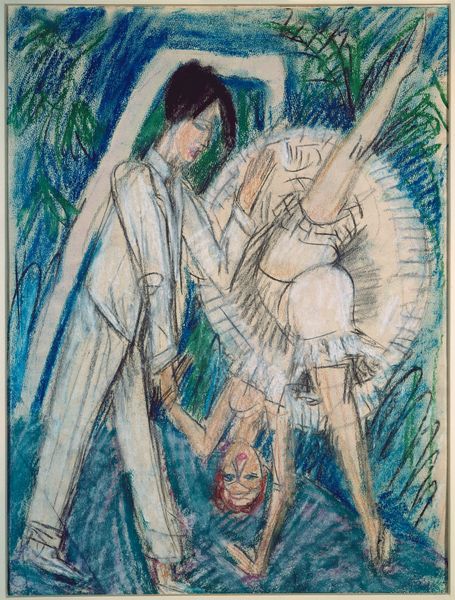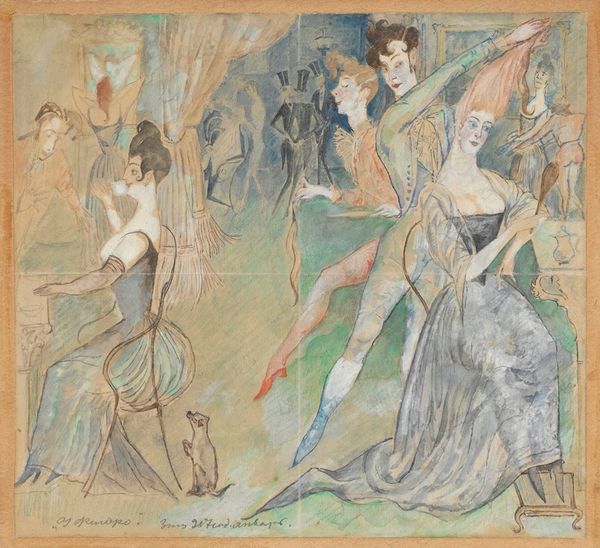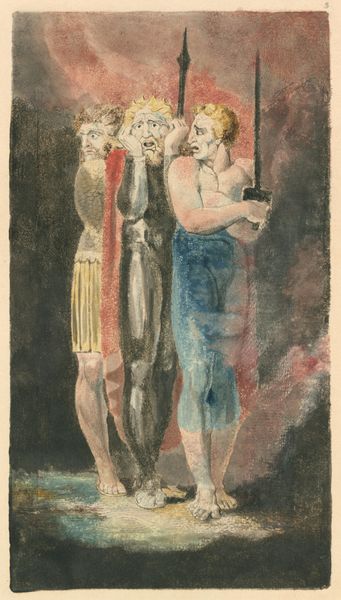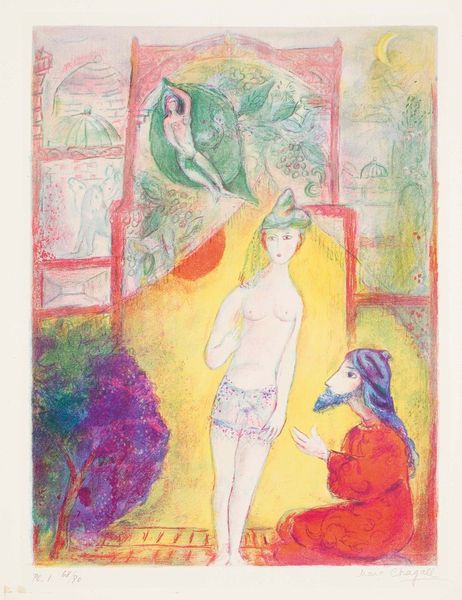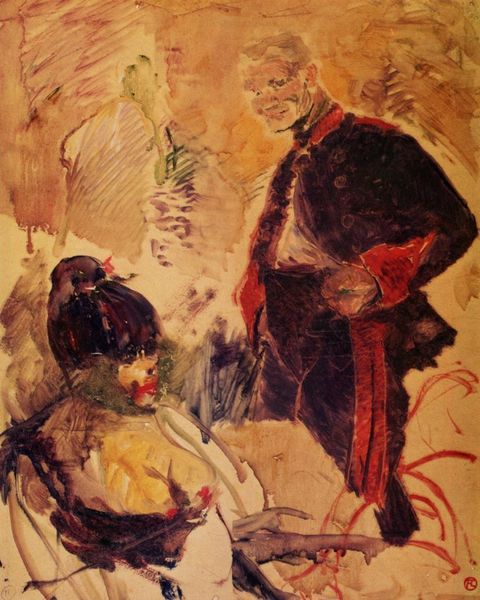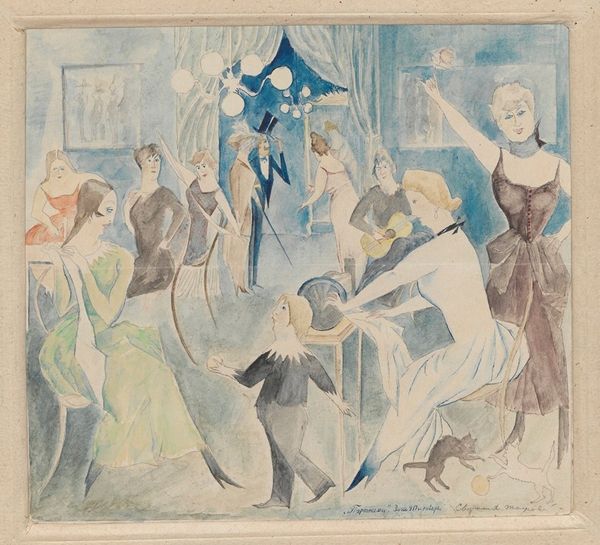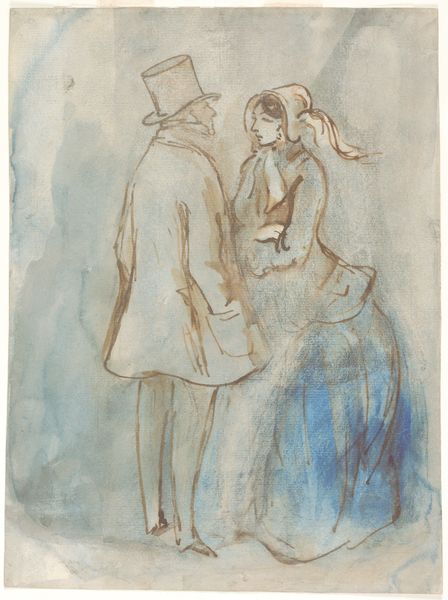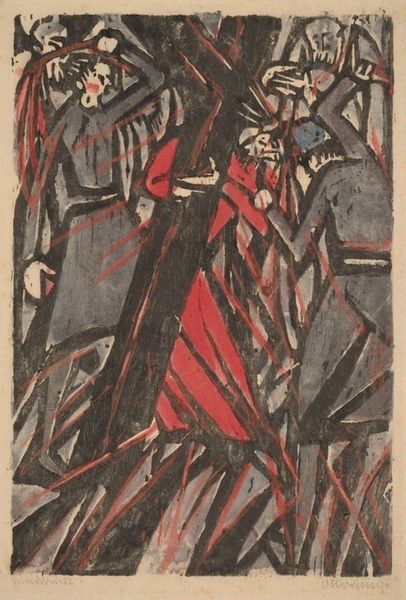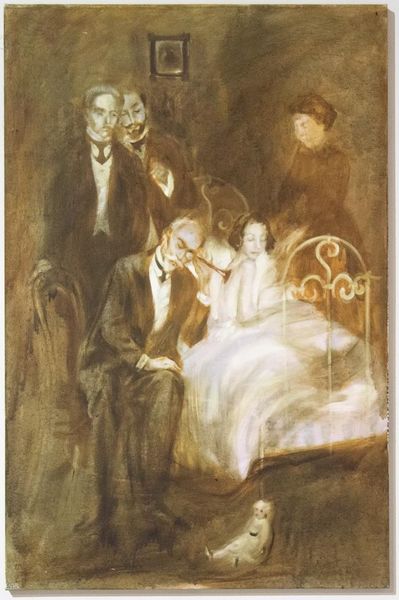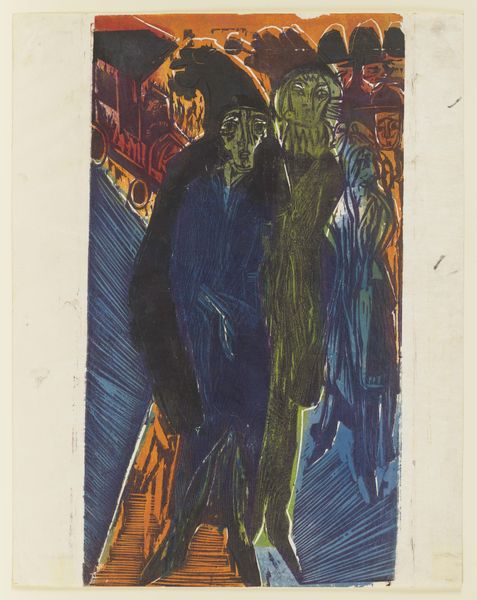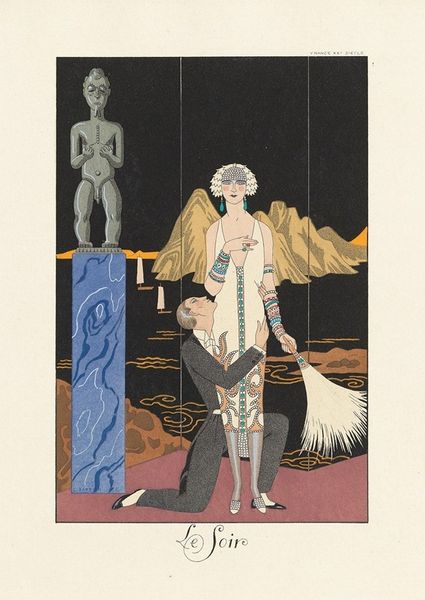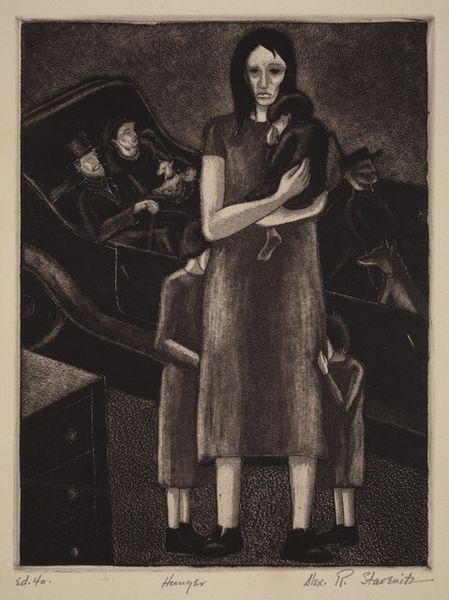
Copyright: Public Domain: Artvee
Curator: Here we have Zygmunt Waliszewski's "Scene in a Circus" from 1916, a watercolor work offering an intriguing glimpse into theatrical life. What’s your initial response to it? Editor: Well, immediately I'm struck by its melancholic mood. Despite the vibrant setting, there's a distinct air of quiet desolation in the circus atmosphere he's captured here. Curator: Absolutely. Notice how the clown sits rather forlornly on the barrel. The harlequin figure, typically a symbol of wit and jest, is rendered here with an almost haunting quality, his gaze averted. Editor: It certainly complicates the typical romanticized circus narrative. One has to consider, though, what socio-political elements might've informed Waliszewski's artistic vision during that time. This piece comes from World War I period – was it a commentary on public performance during a time of suffering? Curator: It's a strong interpretation. Circus imagery often stands for diversion or spectacle but within it, there can exist symbols of sorrow and impermanence. Think of the top hats and stiff attire. Does this reveal something of societal roles imposed by tradition at the turn of the century? Perhaps even masking internal angst behind formal appearances? Editor: It is quite possible. Looking at it now, I see it operating on several layers: not just what's represented, but what's intentionally being revealed or concealed. Consider also who had access to theatre during wartime - likely a select elite, and his perspective, possibly critical. Curator: Very perceptive! It highlights how genre paintings could reflect contemporary social strata. He is engaging with symbolic contrasts here that deepen our understanding of a pivotal moment in history. Editor: Indeed, looking through today's museum visitor perspective makes you want to revisit your own ideas regarding the role of art and entertainment, especially at challenging times in our societies, whether during WW1 or our own troubled era. Curator: It serves as a striking visual paradox - a seemingly simple composition that allows us to view so many interwoven social and individual facets from long ago.
Comments
No comments
Be the first to comment and join the conversation on the ultimate creative platform.
